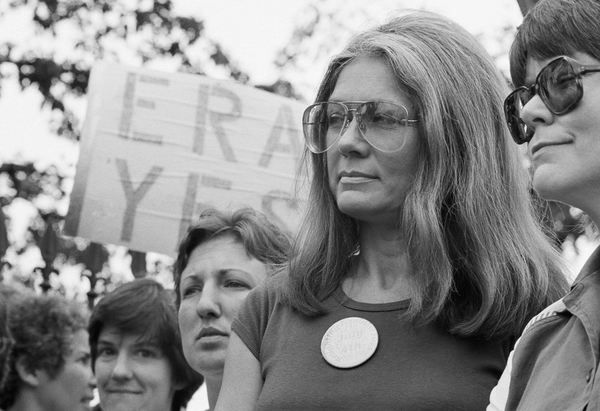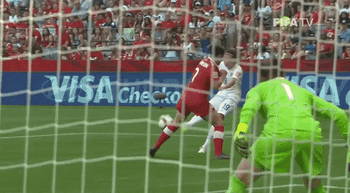Celebrating the 50th anniversary of Battle of the Sexes

◀️ The setup
To fully paint the picture on just how impactful the Battle of the Sexes was, it’s important to remember the broader societal backdrop against which the match took place. From American troops leaving Vietnam to the ongoing Watergate scandal to rising inflation, 1973 was quite a tumultuous year in the U.S.
- It’s also crucial to note how massive the gender pay gap was in 1973: Women earned only 56.6% of what a same-jobbed man made, a difference that was even more stark for women of color.
As for women’s sports, tennis was fresh off a massive equality win — BJK had just successfully advocated for equal pay at the US Open earlier that year, making the Grand Slam the first of the sport’s major tourneys to offer equal prize money to men and women.
- And the march toward equality was also underway at the governmental level. The landmark civil rights law Title IX passed in June 1972, codifying equality for women in educational opportunities, including sports.
- With seeds of progress being planted in so many corners of American society, the ground was fertile for a feminist face-off, and tennis took up the task…
🏓 How it happened

SOURCE: BETTMANN/BETTMANN ARCHIVE VIA TIME.COM
The story of how the Battle of the Sexes came to be is naturally rooted in misogyny. Former American tennis champ Bobby Riggs, a known hustler, showman, and anti-feminist, began bugging BJK to play him, not just because she was a top player, but also because she was a feminist who fought for gender equality.
- Sensing more risk than reward, BJK brushed him off, causing Riggs to publicly challenge her, or any other top woman tennis player. He even anteed up $5K as a prize.
The entire situation, along with Riggs’ male chauvinist pig act, “tapped into anxieties about men’s changing status in a transformed world,” according to BJK’s autobiography. In turn, BJK “became a symbol for people who were tired of seeing women dismissed en masse, demeaned as second-class citizens and shut out of opportunities everywhere, not just sports.”
After doubling the prize money to $10K, a different tennis legend took the bait: Margaret Court, notably a vocal non-feminist — who still boasts the most major titles (across singles, doubles, and mixed doubles) in tennis history, woman or man — agreed to face him, mainly out of spite that BJK had been singled out as the top woman on the court.
- Court ultimately lost a quick two-set bloodbath (6-2, 6-1) to Riggs in what was later deemed the “Mother’s Day Massacre.”
Court’s loss spurred BJK to play Riggs, not out of individual pride, but because she feared the women’s fledgling “tour could be threatened or might disappear, Title IX could be damaged, and so many [other] causes…[like] equal prize money and equitable treatment — would falter.” Winning against Riggs would be bigger than tennis.
🎭 Setting the stage

SOURCE: CHRON.COM
The (second) Battle of the Sexes took place on September 20th, 1973. The Houston Astrodome paid $300K to host, ABC shelled out $750K for the broadcast rights, and the purse was $100K — a ton of money for tennis at the time.
- To preemptively squash potential naysayers, BJK insisted that the match be a men’s best-of-five set bout.
At her request, the announcement for the event was delayed until after July’s Wimbledon where BJK was competing. The ATP — men’s tennis’ governing body — was boycotting the competition (for reasons unrelated to the Battle of the Sexes), allowing the women to own the Grand Slam’s spotlight.
- The result? BJK won her fifth Wimbledon singles title, and that edition of Wimbledon drew the Grand Slam’s second-highest attendance at the time with over 300K eating strawberries and cream.
- What’s more, the WTA, the governing body for pro women’s tennis, was born in a hotel conference room just days before the tournament began. Because b!tches get stuff done.
🎾 The match

SOURCE: BETTMANN/BETTMANN ARCHIVE VIA THEGUARDIAN.COM
Riggs and BJK ultimately announced the Battle of the Sexes mere days after Wimbledon wrapped. Unlike the aforementioned Court, BJK trained in the leadup, refusing to underestimate her opponent. She visualized successfully facing Riggs and “beat[ing] him in [her] head a thousand times.”
- As for Riggs, he continued his misogynistic media tour, and barely prepped, save for taking some vitamins and laying off booze.
The anticipation mounted. Viewing parties were planned, and huge wagers were made across the country, including infuriatingly sexist ones like husbands agreeing to do housework if BJK won and bosses agreeing to make coffee for their secretaries (as if). Women approached BJK to tell her “kick his pompous ass.”
The match itself was chock-full of theatrics, including Riggs entering on a rickshaw and BJK being carried in à la Cleopatra. Television ads cost a whopping $90K per minute — a huge price at the time — and an estimated 90M people tuned in worldwide.
- As for the match itself, BJK had Riggs running and sweating early. For all his big talk, he choked while she won in three straight sets (6-4, 6-3, 6-3).
- Her post-match celebration? Well, according to BJK, all she wanted was a cold beer and ice cream. Relatable.
💪 On-court impact

SOURCE: MIKE SEGAR/REUTERS
BJK’s Battle of the Sexes victory has benefited generations of women, both on and off the tennis court. In the immediate aftermath, she began receiving standing ovations before playing, and even little boys would tell her they wanted to play tennis just like her.
With big “see it, be it” energy, tennis thrived in the wake of the Battle of the Sexes. In the U.S., the sport grew from 10M players in 1970 to over 30M in 1974. And in the three years following the watershed event, research showed that women and girls’ overall sports participation increased a whopping 175%.
A mere five years after the storied match, BJK’s fellow competitor and friend Chris Evert became the first female athlete to earn $1M in career prize money, a feat that likely would’ve taken years longer had BJK not proven women’s value in such a huge, public way.
That financial impact on the game, and players’ pockets, is still recognized today. In fact, when 19-year-old Coco Gauff was presented with her US Open–winning $3 million check earlier this month, she thanked BJK, who was on stage with her, “for fighting for this.”
📈 Off-court impact

SOURCE: YOUTH HOCKEY HUB/X
Baselines and sidelines be damned, BJK’s impact stretches far beyond the tennis court. Her watershed victory over Riggs inspired countless women to ask for long-overdue raises at work, and the dub made her an instant face of the social justice movement alongside leaders like Gloria Steinem and Angela Davis.
As for women’s sports more broadly, BJK launched the Women’s Sports Foundation (WSF) in 1974, an organization dedicated to “enabl[ing] all girls and women to reach their potential in sports and life,” which they do through financial support, research, advocacy, and more.
- They’re responsible for countless initiatives, including helping to establish February’s annual National Girls and Women in Sports Day in 1987.
And BJK’s still walking the walk, or should we say skating the skate. She was integral in orchestrating the recent merger between the PHF and the PWHPA, which helped birth the Professional Women’s Hockey League (PWHL) — the unified women’s pro league that fans have been clamoring for for years.
- Finally, on a personal note, BJK (indirectly) helped support this very newsletter — in 2022, Billie Jean King Enterprises backed Trailblazer Venture Studio, a group that supports startups centering around women and sports, including The GIST.
As the original GOAT has said, “progress is slow.” The fight for equality is far from over, but that match 50 years ago undoubtedly launched women forward. And thankfully for all of us, she’s not even close to being done.
Enjoying this article? Want more?

Sign up for The GIST and receive the latest sports news straight to your inbox three times a week.

